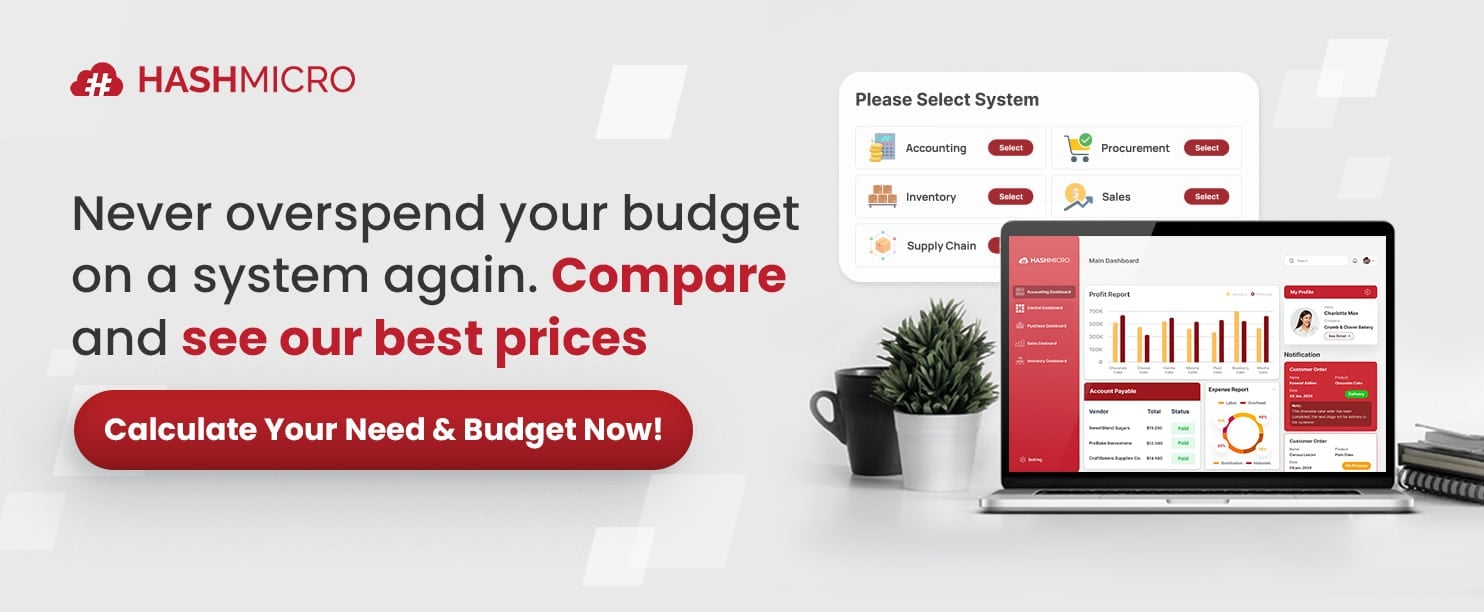Inventory management system is software that helps businesses track and manage their inventory levels, orders, sales, and deliveries. The system automates operational tasks, ensuring accurate and real-time inventory data and enhancing operational efficiency.
Are you struggling with stockouts, overstocking, or inaccuracies in your inventory records? These common issues are often caused by conventional methods such as spreadsheets and paper logs, which can lead to inefficiencies, increased costs, and lost sales opportunities.
Based on data from the 8th International Conference on Computer and Communication Engineering (ICCCE), the cloud-based inventory system efficiently enhances operational efficiency and reduces overstock risks by 95% compared to manual methods.
This article provides a comprehensive guide to understanding and implementing an inventory management system. This article will help you gain valuable insights to optimize inventory processes and drive business success.
Key Takeaways
|
Table of Content
Content Lists

What Is an Inventory Management System and Why Is It Important?
Inventory management system is a tool to monitor and control inventory levels, track orders, manage sales, and streamline deliveries. The system automates inventory processes, providing real-time data, and ensuring accurate inventory tracking.
Implementing an inventory management system is beneficial for businesses. Below are the key benefits businesses will gain by implementing such a system:
- Lowering costs and avoiding unnecessary expenses by optimizing stock levels.
- Real-time tracking ensures accurate inventory levels, reducing the risk of stockouts and overstocking.
- Automation of inventory processes streamlines operations, saving time and reducing manual labor.
- Access to accurate inventory data enables informed business decisions.
- Timely order fulfillment and reduced stock discrepancies enhance customer experience.
- Centralized inventory data ensures seamless coordination across departments.
- The system can grow with the business, adapting to increased inventory and demands.
How Does Inventory Management System Work?
An effective inventory management system (IMS) uses hardware and software to monitor inventory levels, orders, sales, and deliveries. It provides a comprehensive view of inventory across multiple channels. Here’s a breakdown of how it works:
- Data input:The system collects data through barcodes, RFID tags, or manual entry, tracking inventory, including finished goods inventory, as it moves through the supply chain. This ensures accurate and up-to-date information on stock levels and locations.
- Real-time tracking: The system updates inventory data in real-time as items are received, stored, picked, packed, and shipped. This continuous monitoring ensures that stock levels and locations are always current and accurate.
- Automation: Automated processes, such as reordering, stock transfers, and inventory adjustments, reduce the need for manual intervention. IMS minimizes errors and saves time, allowing employees to focus on more strategic tasks.
- Reporting and analytics: The system generates reports and analytics, offering insights into inventory performance and trends. This data helps businesses forecast future needs and make informed purchasing and inventory management decisions.
- Alerts and notifications: The system sends alerts and notifications for critical inventory events, such as low stock levels or order delays. These notifications help businesses stay informed and react quickly to inventory changes.
- Integration: IMS integrates with other business applications, ensuring synchronized inventory data across platforms. This allows for cohesive operations and unified data flow between inventory, accounting, sales, and other departments.
Inventory Management System Examples
Businesses require different inventory management solutions based on size, industry, and specific needs. Below are some examples of how various companies use inventory management systems.
A small business using a spreadsheet system
Small businesses often start with simple inventory management methods like spreadsheets. They manually track inventory levels, orders, and sales using Excel or Google Sheets. While cost-effective, this method can lead to errors and inefficiencies as the business grows.
However, spreadsheets can become cumbersome and prone to mistakes. Transitioning to robust inventory management software like HashMicro can automate these processes, reduce errors, and provide real-time data, making operations smoother and more efficient.
An enterprise using a cloud-based system
Large enterprises typically use advanced, cloud-based inventory management systems (IMS). These systems provide real-time tracking, automated processes, and integration with other business applications, ensuring up-to-date inventory information is accessible anywhere.
One example of a highly effective solution is HashMicro’s cloud-based software, which provides seamless integration with other business functions. This system’s real-time data and automation features are designed to handle complex inventory needs.
Retail stores using point of sale (POS) systems
Retail stores use POS systems that combine sales and an inventory management system. POS systems allow retailers to track sales, manage stock levels, and reorder products automatically, enhancing overall efficiency and customer satisfaction.
HashMicro’s POS system provides comprehensive features that streamline sales and inventory processes. With capabilities like automated reordering and detailed sales analytics, it ensures efficient stock management and improved customer service.
Click the banner below to learn more about HashMicro’s pricing scheme and identify the perfect plan for your business needs. You will gain detailed insights into how HashMicro’s software can enhance operational efficiency and growth.
Key Features of Inventory Management System
An effective inventory management system offers a range of features designed to streamline operations and enhance accuracy. Below are some of the key features that businesses can benefit from:
1. Inventory tracking
This feature monitors inventory levels in real-time to ensure accurate, up-to-date information, preventing stockouts and overstocking. This visibility helps businesses maintain optimal stock levels and meet customer demands efficiently, facilitating effective inventory management.
2. Stock forecasting
Inventory management software uses historical data and analytics to predict future inventory needs. This feature helps businesses plan, reduce excess inventory, and avoid stockouts by making informed purchasing and supporting periodic and perpetual inventory systems.
3. Automated reordering
IMS triggers automatic replenishment orders based on predefined inventory thresholds, maintaining optimal stock levels without manual intervention. This feature reduces the risk of human error and ensures timely restocking.
4. Barcode and RFID scanning
Barcode and RFID (Radio Frequency Identification) scanning features facilitate quick and accurate data entry, streamlining the receiving, picking, packing, and shipping inventory processes. This technology reduces manual errors and speeds up inventory handling.
5. Transfer management
This feature efficiently manages inventory transfers between different locations or warehouses. It ensures accurate tracking of stock movements, reduces transfer errors, and helps maintain balanced inventory levels across all sites.
6. Reporting and analytics
IMS generates detailed reports and analytics to provide insights into inventory performance, trends, and forecasts, which help inform decision-making and optimize inventory management strategies.
The Future of Inventory Management
The future of inventory management is evolving rapidly, driven by advancements in technology and changing business needs. Here’s what you can expect in the coming years:
1. Cloud-based solutions
Cloud-based inventory management software (IMS) will become more prevalent, offering scalable and flexible solutions for businesses of all sizes. These systems will provide real-time access to inventory data from anywhere, enabling better decision-making and collaboration.
2. AI and machine learning
AI and machine learning will enable more accurate demand forecasting and inventory optimization. These technologies will analyze vast amounts of data to predict trends, helping businesses maintain optimal inventory levels and achieve effective inventory management.
3. Blockchain technology
Blockchain will offer secure and transparent tracking of inventory throughout the supply chain. This technology will help prevent fraud, reduce errors, and improve traceability, making it easier to manage complex supply chains.
4. Automation and robotics
Automation and robotics will streamline inventory management processes, from warehouse operations to order fulfillment. Automated systems, such as perpetual inventory systems, will handle repetitive tasks, reducing human error and increasing efficiency.
5. Internet of Things (IoT) integration
IoT devices will provide real-time data on inventory conditions, such as temperature, humidity, and location. This will enhance visibility and control over inventory, ensuring that items are stored and transported under optimal conditions and complementing both perpetual and periodic inventory systems.
Streamline Your Inventory Management with HashMicro Software
HashMicro Inventory Management Software is a comprehensive solution designed to automate and optimize inventory processes. It offers real-time tracking, automated workflows, and integration with other systems, ensuring effective inventory management.
HashMicro incorporates all the essential features discussed earlier, including barcode technology, periodic inventory system, and perpetual inventory system. These features enable accurate stock levels, automate reordering, and generate detailed reports.
Moreover, HashMicro offers a free product tour and consultation to help businesses understand the capabilities of its IMS. This offer allows potential users to explore the software’s features and benefits, ensuring they choose the best solution for their inventory needs.
Trusted by various industries, including McDonald’s, Danone, and Abbott, HashMicro has established a strong reputation for reliability and effectiveness. This credibility ensures that HashMicro’s solutions can improve inventory management and operational efficiency.
Conclusion
An effective inventory management system is crucial for maintaining optimal stock levels, reducing errors, and enhancing overall business efficiency. Implementing a robust IMS ensures accurate, real-time data and streamlined operations, essential for business success.
HashMicro Inventory Management Software is a tool that offers inventory tracking, stock forecasting, and barcode and RFID integration features. Its reliability and integration capabilities make it the top choice for businesses aiming to improve their inventory processes.
Don’t miss the opportunity to streamline inventory management with HashMicro’s advanced software. Sign up for a free demo today and get the chance to consult your business’s needs with our expert teams.
Frequently Asked Questions About Inventory Management System
-
What is an ERP inventory management system?
An ERP inventory management system integrates inventory control with other business functions within an ERP system. It helps businesses track and manage inventory efficiently, ensuring accurate stock levels, reducing costs, and improving overall operations through real-time data and automation.
-
What are the 5 elements of inventory management?
Inventory management encompasses forecasting, planning, procurement, tracking, and optimization. Demand forecasting anticipates customer purchases, assisting businesses in determining their inventory needs.
-
What is an example of inventory management?
An example of inventory management is a clothing store using software that updates stock levels automatically when an item is sold. If inventory gets low, the system alerts the store to reorder, helping to keep popular items in stock and avoid running out or overstocking.

































